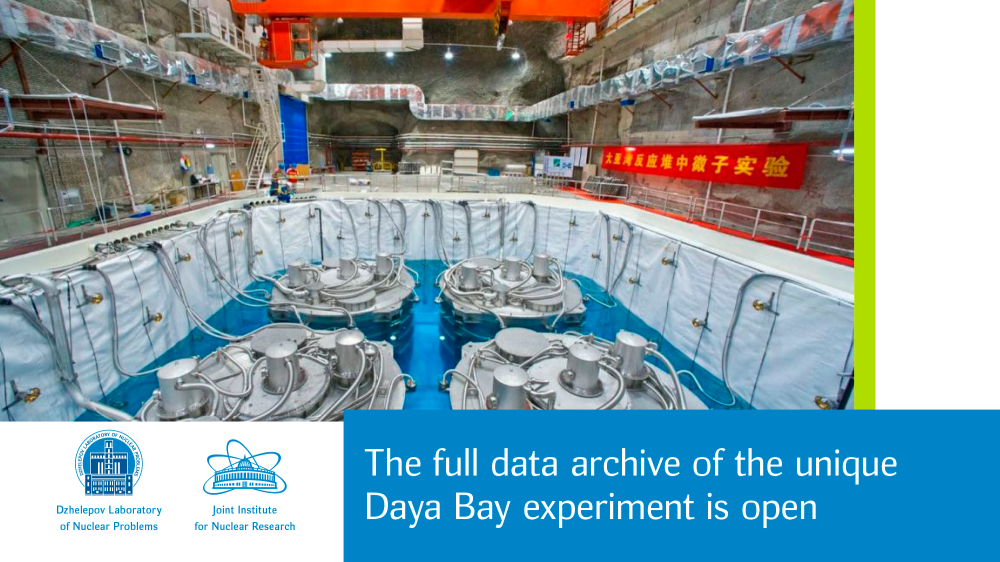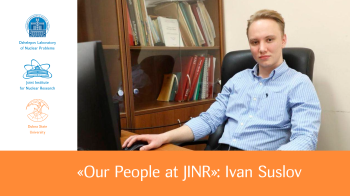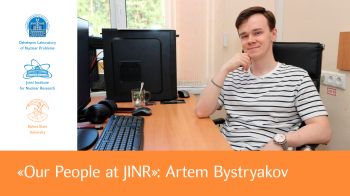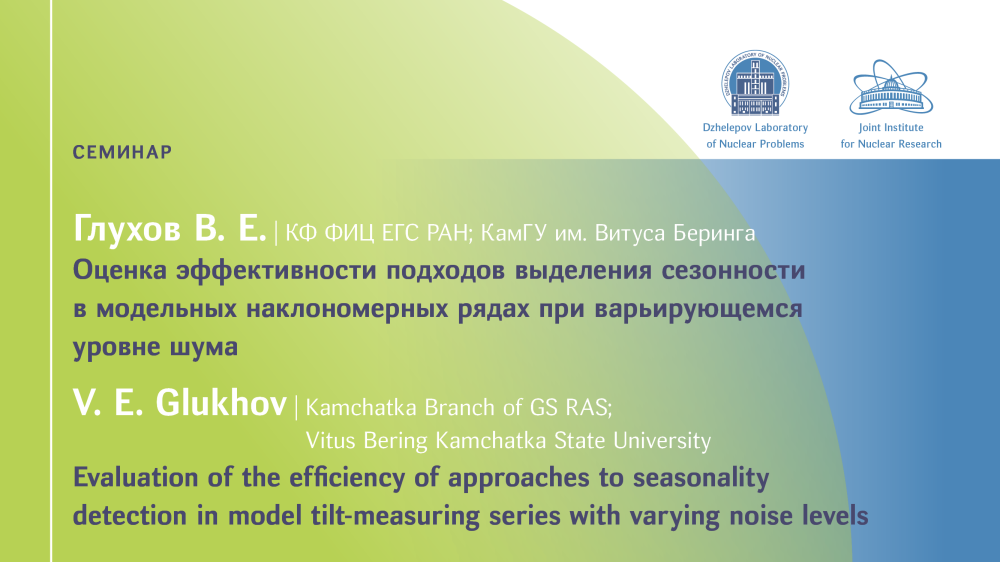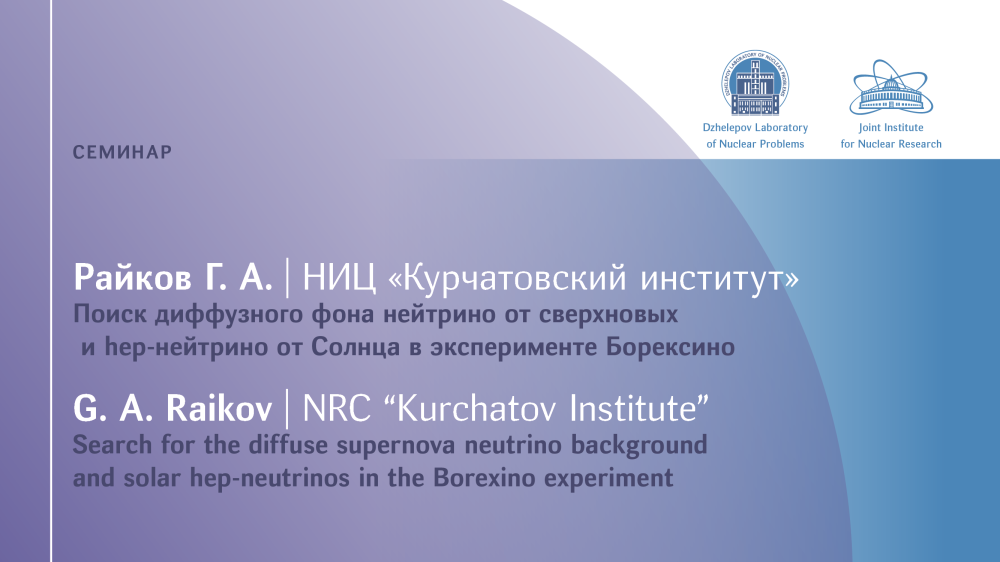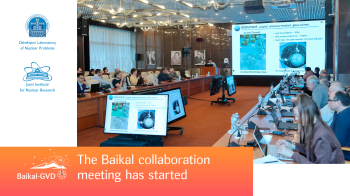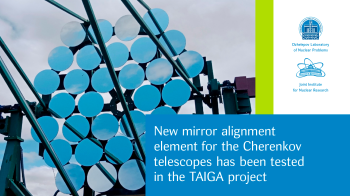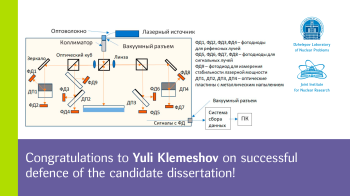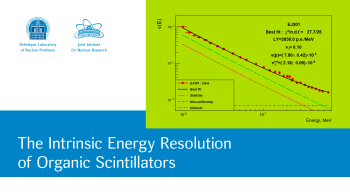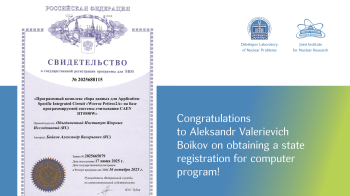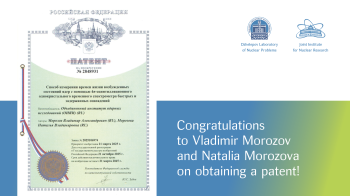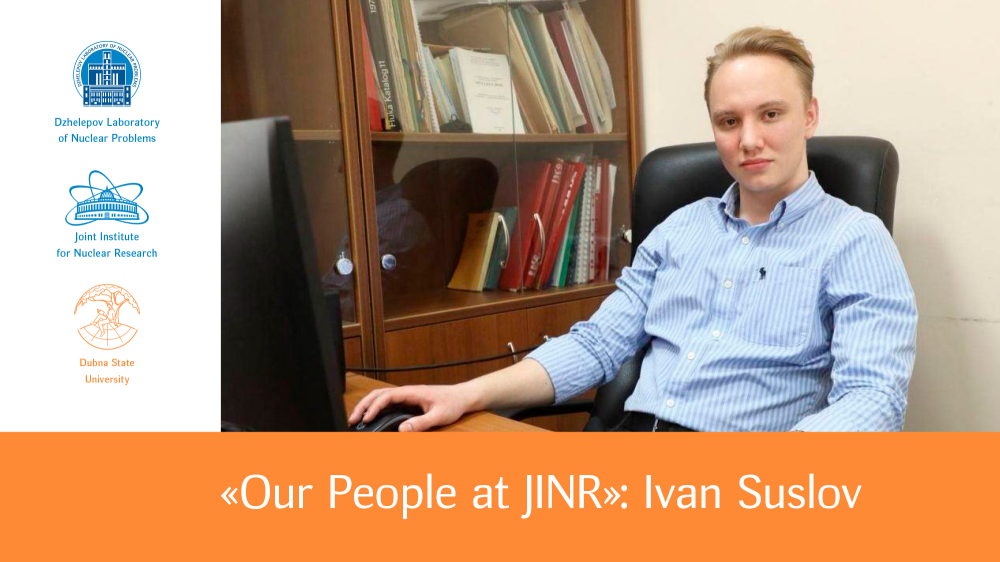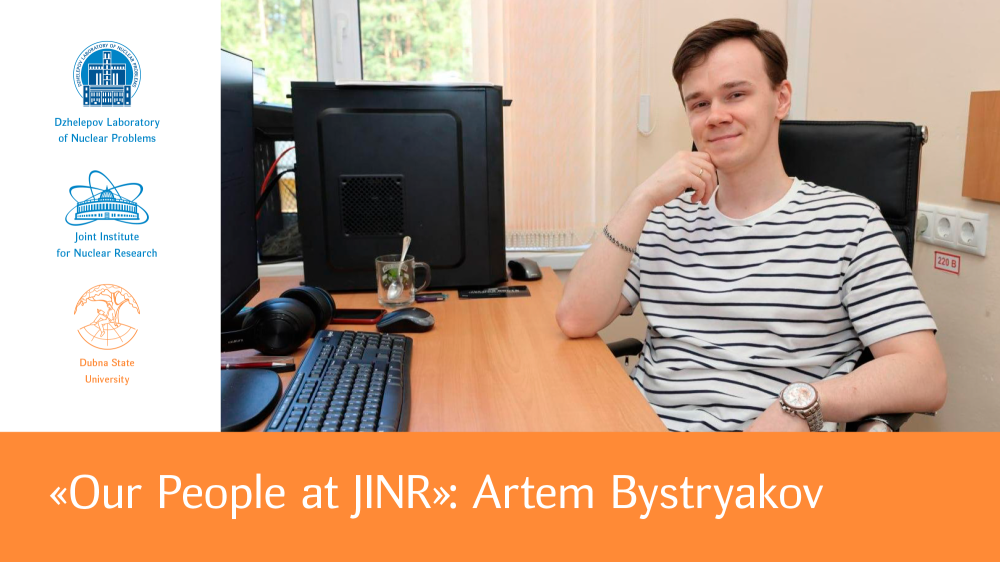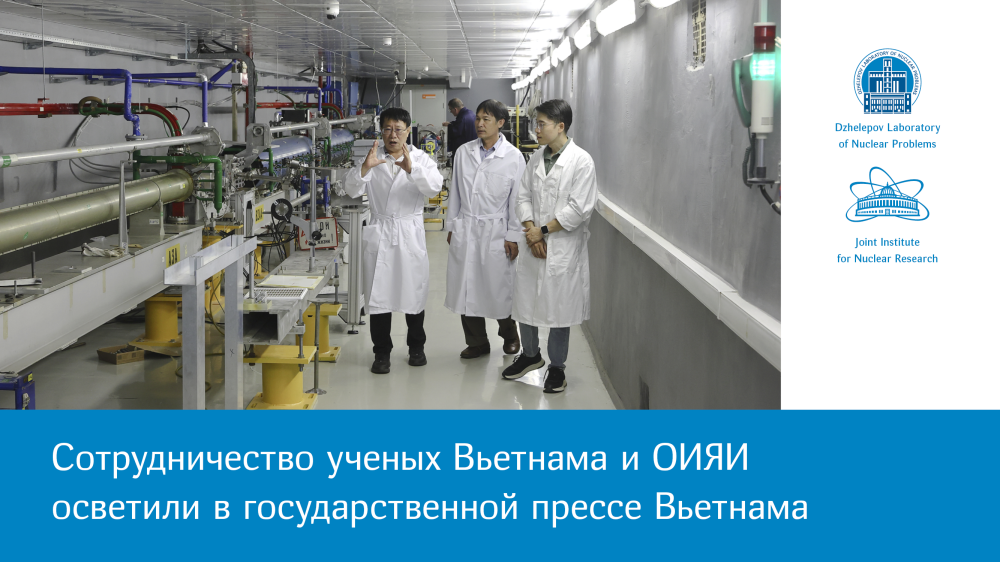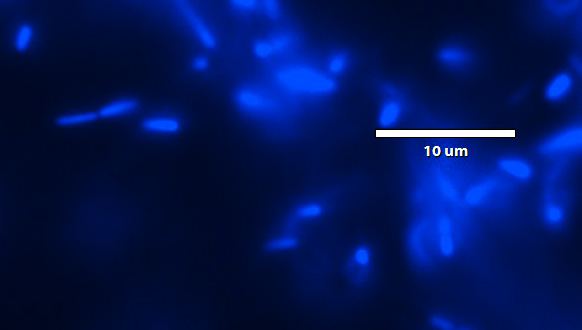08.12.2025
News of the laboratory
The international collaboration studying reactor electron antineutrinos in the Daya Bay experiment has opened access to its full data archive. Scientists from around the world (not just collaboration members) will be able to analyze the data, reproduce the data processing results, use them in joint or global analyses, or test their theories against the experimental data.
05.12.2025
Today, on 5 December 2025, Yuri Nikolaevich Uzikov, a leading researcher of the DLNP Department of Colliding Beams, has turned 75.
03.12.2025
In Universitetskaya Dubna (No. 6 (69), 2025) in the section "Our People at JINR", an interview with Ivan Suslov was published. Ivan Suslov is a junior researcher of the DLNP Department of Nuclear Spectroscopy and Radiochemistry, a graduate of Dubna State University in 2019 (Master's degree) and in 2023 (postgraduate studies) in the field of "Chemistry".
03.12.2025
In Universitetskaya Dubna (No. 5 (68), 2025), in the new section "Our People at JINR," an interview with Artem Bystryakov was published. Artem Bystryakov is a junior researcher of the DLNP Department of Nuclear Spectroscopy and Radiochemistry, a graduate of Dubna State University in 2021 in the field of "Physics".
News
02.12.2025
In the JINR International Conference Centre the Baikal Collaboration meeting is underway 1–5 December 2025. The participants of the meeting are discussing the condition of the Baikal-GVD facility at the end of 2025, the results of event reconstruction work, the results of astrophysical research using data from the telescope, issues related to the deployment of the expedition in 2026, and much more.
02.12.2025
Today, on 2 December 2025, Nikolay Petrovich Kravchuk, senior researcher of the DLNP Department of Multiple Hadron Procceses has turned 75.
26.11.2025
The fourth telescope of the TAIGA gamma observatory has been equipped with an automatic mirror alignment element. The design was developed by staff members of Sector 4 of Astroparticle Physics Research of the DLNP Department of Particle Physics, assembled and tested at the testing area in Tory, and installed jointly with representatives of the Applied Physics Institute, ISU.
25.11.2025
Last week, on 20 November 2025, at a meeting of the Dissertation Council of the VBLHEP JINR, Yuli Viktorovich Klemeshov, an engineer from Sector 1 of Laser Metrology of the DLNP Department of Research and Innovation, defended his dissertation "Low-frequency stabilization of radiation power for a compact precision laser inclinometer."
24.11.2025
In an article published last week in The European Physical Journal Plus, Oleg Yu. Smirnov, a leading researcher at the Laboratory of Nuclear Problems, Doctor of Sciences(Physics and Mathematics), discusses the fundamental limit for precision of particle detectors based on organic scintillators.
19.11.2025
The Institute of High Energy Physics (IHEP) of the Chinese Academy of Sciences today held a press conference in Jiangmen City to announce the successful completion of the Jiangmen Underground Neutrino Observatory (JUNO) and the release of its first physics results. After more than a decade of design, construction, and international collaboration, JUNO has become the world’s first next-generation, large-scale, high-precision neutrino detector to begin operation.
11.11.2025
Junior researcher of the Department of Multiple Hadron Processes at the Laboratory of Nuclear Problems of the Joint Institute for Nuclear Research, Aleksandr Valerievich Boykov, became an author of the computer program: "Software suite for data acquisition for the Application-Specific Integrated Circuit "Weeroc Petiroc2A" based on the programmable readout system CAEN DT5550W".
11.11.2025
Vladimir Aleksandrovich Morozov and Natalia Vladimirovna Morozova, employees of Sector No. 1 of Nuclear Radiation Spectrometry of the Scientific and Experimental Department of Nuclear Spectroscopy and Radiochemistry at the Laboratory of Nuclear Problems of the Joint Institute for Nuclear Research, have become the authors of a patent for the invention "Method for measuring the lifetime of excited states of nuclei using a 4π-scintillation single-crystal time spectrometer for fast and delayed coincidences."


